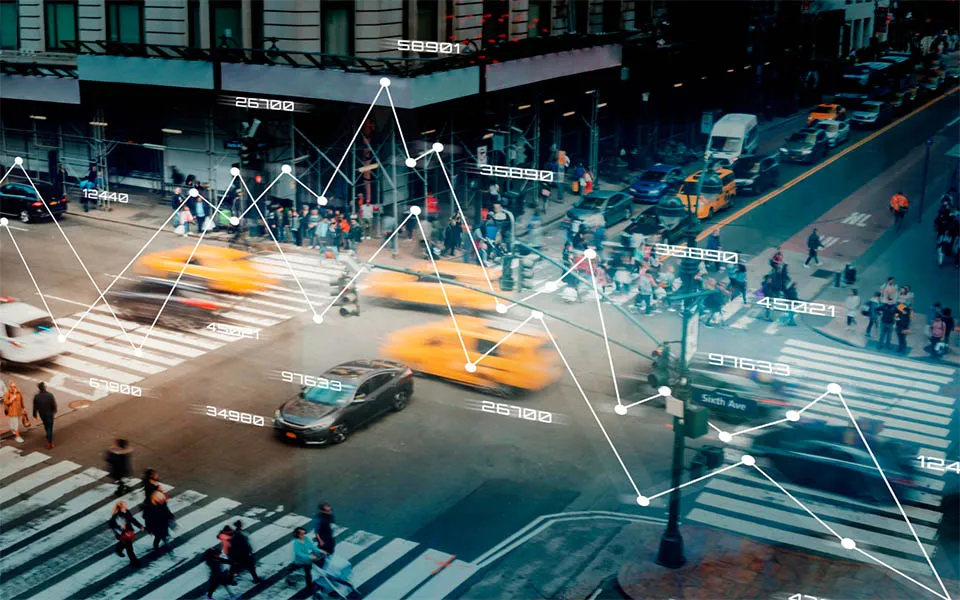Ensuring Robust Security in Pervasive/Ubiquitous Computing Environments
Pervasive and ubiquitous computing have revolutionized the way we interact with technology. With a multitude of interconnected devices seamlessly integrating into our daily lives, the need for robust security mechanisms has never been more critical. This article explores the key considerations and strategies for implementing effective security in pervasive and ubiquitous computing environments.

1. Authentication and Authorization
In the realm of pervasive computing, where devices communicate seamlessly, ensuring that only authorized entities access the system is paramount. Strong authentication mechanisms are essential. Multi-factor authentication adds an extra layer of security, requiring users or devices to provide multiple forms of identification. Additionally, robust authorization mechanisms must be in place, defining and enforcing access control policies to restrict actions based on user privileges.
2. Encryption for Data Protection
Securing data in transit and at rest is a foundational aspect of pervasive computing security. Encryption plays a pivotal role in achieving this goal. Employing secure encryption protocols, such as TLS for communication, safeguards data from eavesdropping and man-in-the-middle attacks. Utilizing strong encryption algorithms and effective key management practices ensures the confidentiality and integrity of sensitive information.
3. Secure Communication Protocols:
Choosing secure communication protocols is crucial for protecting the integrity and confidentiality of data exchanged between devices. Utilizing protocols like HTTPS ensures encrypted communication over the web. It is imperative to establish secure communication channels, mitigating the risk of unauthorized access and data interception.

4. Secure Software Development Practices
The foundation of any secure system lies in the way software is developed. Following secure coding practices is imperative in pervasive computing environments. Regularly updating and patching software helps address vulnerabilities promptly. Security audits and code reviews play a pivotal role in identifying and mitigating potential security risks, ensuring the integrity of the entire system.
5. Device Security Measures
Devices are the nodes in pervasive computing networks, and securing them is critical. Secure boot processes, firmware updates, and hardware-based security features contribute to the overall security posture. Device authentication ensures that only authorized devices can join the network, preventing unauthorized access. Additionally, disabling unnecessary services and ports helps reduce the potential attack surface.
6. Privacy Protection Strategies
To safeguard against evolving security threats, deploying intrusion detection systems is essential. These systems monitor network traffic, identifying anomalous patterns indicative of potential security breaches. Complementing this, intrusion prevention mechanisms automatically respond to and mitigate security incidents, providing a proactive defense against malicious activities.
7. Intrusion Detection and Prevention
Given the sensitivity of personal data in pervasive computing, privacy protection mechanisms must be robust. Implementing measures to protect user privacy, coupled with transparent communication of privacy policies, fosters trust. Obtaining explicit consent for data collection and processing ensures compliance with privacy regulations and reinforces user confidence in the system.
8. Secure Data Storage
Securing data storage on devices is equally critical. Applying encryption to stored data prevents unauthorized access, even in the event of physical device compromise. Implementing secure data deletion mechanisms ensures that data is thoroughly and securely removed when it is no longer needed, mitigating the risk of data exposure.
9. User Education and Awareness
End-users are often the weakest link in any security chain. Educating users about security best practices is essential. This includes creating strong passwords, recognizing phishing attempts, and understanding the consequences of sharing sensitive information. User awareness campaigns contribute significantly to the overall security culture of a pervasive computing ecosystem.
10. Compliance with Regulations
In the landscape of pervasive computing, where personal data is omnipresent, compliance with data protection and privacy regulations is non-negotiable. Adhering to regulations such as GDPR, HIPAA, or other industry-specific standards ensures that the system operates within legal and ethical boundaries, protecting both users and the organization from legal consequences.
11. Continuous Monitoring and Evaluation
Security is an ever-evolving landscape, and continuous monitoring is essential. Regularly updating security measures in response to emerging threats and technological advancements is crucial. Periodic evaluations, including vulnerability assessments and penetration testing, provide insights into the effectiveness of existing security mechanisms, allowing for necessary adjustments.
12. Horizon Powered Role in Enhancing Security
Horizon Powered Products, with their cutting-edge technologies, play a pivotal role in fortifying security within pervasive computing environments. Through advanced authentication and authorization features, these products ensure that only authorized entities gain access, bolstering the overall integrity of interconnected systems. The incorporation of robust encryption protocols safeguards data in transit and at rest, addressing the paramount need for confidentiality in pervasive computing.
Additionally, Horizon Powered 4G and 5G Devices contribute to secure software development practices, providing a foundation of reliability through regular updates, patching, and comprehensive security audits. By leveraging Horizon Powered Products, organizations can instill trust in their pervasive computing ecosystems, meeting the ever-growing demands for privacy, data protection, and resilient security measures.
Conclusion
In the rapidly evolving landscape of pervasive and ubiquitous computing, security is not a one-time implementation but an ongoing process. By incorporating these comprehensive security measures, organizations can build a resilient and secure environment, safeguarding user data, privacy, and the integrity of interconnected devices. As technology continues to advance, staying vigilant and adapting security measures to emerging threats will be key in ensuring the long-term success and trustworthiness of pervasive computing systems.








